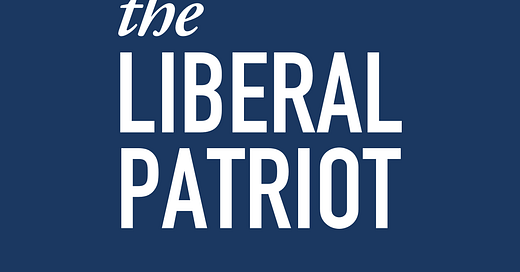Revisiting the Three Point Plan to Fix the Democrats and Their Coalition
Still not much progress.
In October of 2022, I wrote a widely-circulated post on “A Three Point Plan to Fix the Democrats and Their Coalition.” I argued:
The Democratic coalition today is not fit for purpose. It cannot beat Republicans consistently in enough areas of the country to achieve dominance and implement its agenda at scale. The Democratic Party may be the party of blue America, especially deep blue metro America, but its bid to be the party of the ordinary American, the common man and woman, is falling short.
There is a simple—and painful—reason for this. The Democrats really are no longer the party of the common man and woman. The priorities and values that dominate the party today are instead those of educated, liberal America which only partially overlap—and sometimes not at all—with those of ordinary Americans.
I revisited the three point plan last year right after Biden’s 2023 State of the Union (SOTU) address, which he gave in the wake of surprisingly good election results in November, 2022 and the passage of two big bills, the CHIPS and Science Act and the Inflation Reduction Act, shortly before that election. In the 2023 SOTU address, Biden struck a distinctly populist pose and claimed the Democrats’ policies were nothing less than a “blue collar blueprint to rebuild America.” The address was widely-lauded in Democratic circles; Biden was credited with stealing Trump’s populism, displaying the political savvy of Bill Clinton and practicing the class politics of FDR.
At the time I noted it was difficult to detect such enthusiasm among ordinary voters, particularly working-class voters. The 538 rolling average of Biden’s approval rating had Biden’s approval rating static both in the months before and right after his 2023 SOTU address generally in the the 42-43 percent range with 52-53 percent disapproval. And in trial heats against Trump, Biden was essentially tied and couldn’t seem to open up a real lead.
Here we are a year and a month later, in the wake of yet another widely-lauded (by Democrats) SOTU address by Biden. Has the situation improved for Democrats? No, it has not. Biden’s approval rating now typically is in the 39-41 percent approval range with 55-57 percent disapproval. As Harry Enten points out “Biden is the least popular elected incumbent at this point in his reelection bid since World War II.”
And Biden’s trial heats vs. Trump have only gotten worse. Trump is currently up by two points; Biden hasn’t had a lead of any kind in the RCP running average since September of last year. That compares to a Biden lead of over seven points at this point in the cycle four years ago. As Enten also notes:
[A] lead of any margin for Trump was unheard of during the 2020 campaign – not a single poll that met CNN’s standards for publication showed Trump leading Biden nationally.
It’s worth considering what a two point national lead for Trump could mean for Biden in key states relative to 2020. Biden won the national popular vote for President by 4.4 points in 2020; if he’s now trailing by two points, that’s a 6.4 point swing toward Trump. We can apply that national 6.4 point swing to key states to see where we might expect them to wind up in such a scenario. Unsurprisingly, that swing would put each of the six generally accepted key swing states—Arizona, Georgia, Michigan, Nevada, Pennsylvania and Wisconsin—in Trump’s 2024 column. But what’s really interesting here is how closely applying that swing gets you to current polling averages in four of these states—Arizona (Trump +5.4), Georgia (+5), Michigan (+3.5) and Nevada (+4.3). The other two states—Pennsylvania and Wisconsin—are underperforming the national swing giving Trump current leads of only about a point.
In addition, Democratic party identification has been declining throughout Biden’s presidency and is now at its lowest level since 1988. Looming over this trend and all the other rough results for the Democrats cited here is the indisputable fact that Democratic poor performance is being driven by defections among working-class (noncollege) voters of all races. Education polarization of the electorate is just getting worse and Democrats are on the wrong end of the stick, especially for a party that fancies itself the natural party of America’s working class.
Perhaps it is time to admit that, despite the peppy talk from the Democrats’ amen corner, the Democratic party brand is still in deep, deep trouble. With that in mind, I’ll review the bidding from my earlier three point plan.
Keep reading with a 7-day free trial
Subscribe to The Liberal Patriot to keep reading this post and get 7 days of free access to the full post archives.





